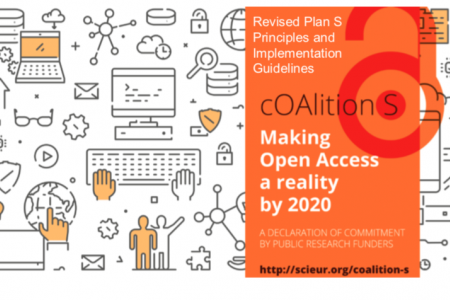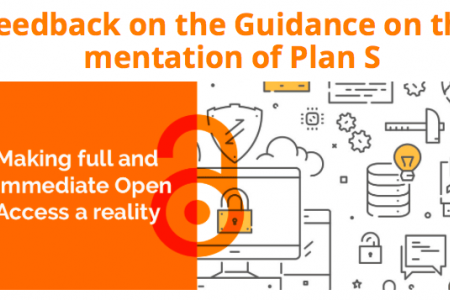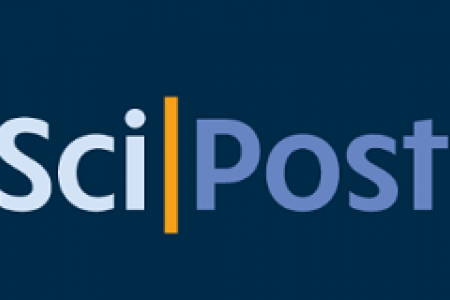Institutional publication policies and open access at Leiden University
Whilst we are on our way towards a situation where 100% open access is the norm, we look at the ways that academic libraries can help guide authors and institutes to make good decisions in the rapidly developing field of open access publishing.
Background
It is not easy for an author, upon identifying a journal or publishing platform where they would like to publish, to fathom out the conditions for making their article open access. As a result, an author can easily miss choices that would make open access easier for them, or can end up having to pay unnecessary costs. Here at Leiden University Libraries we’re planning to help institutes to plan and manage the transition to 100% open access whilst keeping control of the costs and maintaining the quality of publications.
Leiden University is organized into institutes, which are grouped in faculties, and research staff look to both of these for guidance on procedures and protocols. An institute publication policy would help authors to navigate the choices that they need to make.
The transition to open access publishing has called upon faculties and institutes to develop or revise their publication policy, and to regularly update this policy on the basis of open access developments, legal or otherwise. The developments currently taking place around open access policy have consequences for institutes and faculties in three main areas: which publication platforms to choose, how much to spend, and how to ensure quality. Libraries can assist faculties and institutes in developing their publication policy and making the choices that best suit them and their researchers.
A new recognition and reward system for academics, based on broader open science principles, is being planned in the Netherlands and developers of the system would like to take different kinds of publications into account rather than rely only on traditional peer-reviewed articles. However, the current open access policies of Leiden University and most research funders (both national1 and International2) do still focus on peer reviewed articles, which is also the area of scientific information infrastructure where most spending is currently directed.
Examples of national and international open access policies
1 Letter from State Secretary Sander Dekker to The Netherlands House of Representatives of 15 November 2013.
2 The Berlin Declaration on Open Access to Knowledge in the Sciences and Humanities (2003) signed by all Dutch universities and research organisations.
100% open access ambitions
Funders, and therefore academics, share an ambition to achieve 100% open access of peer reviewed articles by the end of 2020.
An international group of research funders, under the name cOAlition S, has united since 2018 with the aim of making open access publishing a requirement in their funding conditions. The goal of cOAlition S is to accelerate the transition to open access for both publishers and researchers. On 31 May 2019 cOAlition S announced the final ‘Plan S’ guidelines. These guidelines announced sanctions (see Plan S Section 7) that may be imposed on researchers by research funders if the requirements for open access publication are not met. Possible sanctions include reclaiming funding, not considering relevant publications on a researcher's CV in their next application, and/or excluding researchers from future calls.
NWO, the Dutch Research Council, has confirmed that from 1st January 2021, when Plan S will be applied to all NWO and ZonMw calls, they will “withhold 2.5% of the grant money if, on completion of the project, it appears that publications listed in the final report are not available in Open Access” with researchers “given the opportunity to ‘correct’ this by retro-actively depositing their publications in a repository”.
It remains largely unclear how great the impact of Plan S will actually be. Nevertheless, we know we are moving towards a situation where 100% open access is the norm.
At Leiden University Libraries we have observed the difficulties that many parties face when trying to find the right way to reach that norm. Developments in the open access landscape follow each other in quick succession so that the best option at one moment may no longer be the best option at the next. A publication policy and support from the library may reduce these difficulties.
Publishing options and publication policies
A crucial tenet of academic freedom is that researchers can choose where to publish their articles. The movement encouraging authors to publish open access does not restrict that freedom, but it is making the consequences of certain choices more tangible. For example, by accepting a research grant from a cOAlition S funder, the researcher implicitly endorses the guidelines on publishing open access peer-reviewed scientific articles and, if that isn’t possible, accepts the sanctions that may be imposed. Without limiting the choice of journal, cOAlition S funders offer their researchers three options (see the Plan S Principles and Implementation) that they hope will accelerate the transition to open access:
- publish via a fully open access publishing venue (journal or platform);
- publish in a subscription venue and immediately after publication make an open access deposit in a repository of either the peer-reviewed manuscript or the publisher's version of the article;
- publish in a journal that is part of a “transformative deal”.
To be able to oversee the consequences of specific publication choices, and to avoid unforeseen financial consequences, without compromising qualitative considerations and the freedom to choose where to publish, Leiden University Libraries strongly recommends the creation and implementation of an up-to-date publication policy for each institute within the university. Such a publication policy should be tailor-made for each institute and will need to be frequently updated to reflect external developments, making it necessary to review the policy regularly.
Academic institutes could identify in their publication policy a list of preferred journals based on criteria that might include qualitative considerations, the status and scope of the journal, and the network in which the institute and its researchers operate. Such a list would not be used to prescribe where researchers should publish, but rather to identify the most important and commonly used journals, for authors and for the institute, so that further publication plans can be made.
The journals on this preferred list can then be monitored as to what extent they meet the Plan S guidelines, what possible implications there are for the open access objectives of the university or institute, and how the potential costs of publishing will be covered. If a selected journal does not meet the Plan S guidelines, then publication costs in that journal may not be retrievable from the relevant external research budget - something the institute will have to take into account. If an author chooses a journal that is not on the preferred list, it should be clear that this may lead to costs that will have to be covered by external funds.
A publication policy also helps to monitor budget spending and take potential financial consequences into consideration: in which journals is the cost of open access publication financially regulated by our national licenses? In which journals is the cost of open access publication covered by a research funder? For which journals is the institute willing to pay the APC itself? For which journals is the institute not willing to do so? What are the alternatives and what are the consequences? A publication policy can help to map out clearly the answers to these questions.
Publication costs
Although authors can make use of both the repository and the university’s “read-and-publish” agreements (whereby the university pays via a single contract to read articles that are not open access and pays to publish open access for an agreed number of articles) without any costs, both these open access solutions do bring costs to the university.
The repository requires structural resources for management, maintenance, and development. However, it is an essential piece of infrastructure in adhering to Plan S requirements.
The university and faculties pay publishers up-front for the read-and-publish agreements allowing authors to make use of the opportunity to publish open access during the year without being individually charged. If the current transformative deals succeed and these journals “flip” to become completely open access, it is expected that the only criterion determining the cost will be the number of publications. The costs will then be divided according to the number of publications belonging to a university and then may be distributed further down the line to a faculty and maybe even down to the level of an institute. Besides these ongoing publication costs, additional resources will be needed to maintain access to the publishers' older publications and archives.
When a journal is regarded as gold open access, the publisher usually asks for an Article Processing Charge (APC), which shifts the costs of making a scientific article available from the reader or reader’s institution (via a subscription) to the author or the author’s institution. Leiden University has no central fund for the reimbursement of APC costs.
Plan S states that universities or research funders must reimburse open access costs to prevent them being charged to individual authors (See Plan S principle 4). However, APCs are not usually remunerated by a university. Authors are expected to submit a request for funds when making a grant application to cover APCs from within their research budget. If they do not have enough money in their research budget and yet an open access requirement has to be met, a version of the relevant article can always be made available in the Leiden Repository, or an exemption (“waiver”) can be requested from the publisher.
Following analysis of our own situation at Leiden University (see the cost calculation model below), we believe it is reasonable to assume that the achievement of 100% open access, which most likely will take place during the next few years, will result in extra costs and cost control will therefore be an important tool to ensure a smooth transition. Institutions should carry out unambiguous and careful financial administration with regard to publication costs, so that any increases in expenditure as a result of open access developments can be closely monitored. This knowledge is necessary not only for cost control, but also for the periodic adjustment of the institutional publication policy.
Quality assurance
With the increase in open access publishing, academics have indicated a need for assistance in checking the quality of various publication media. For example, if Leiden academics choose to publish in a new open access journal, they want to be sure that they are not dealing with a so-called predatory journal (a fake journal set up to collect money via APCs) or a journal of questionable quality. In case of doubt, Leiden University Libraries suggests carrying out a quality check by referring to the Directory of Open Access Journals (DOAJ), and by looking at the composition of the editorial board, the way in which peer review is organised, the authors and papers that have already been published, whether the journal has been indexed elsewhere (e.g. in Web of Science, Scopus, Romeo Sherpa), and whether the publisher is a member of the Open Access Scholarly Publishers Association (OASPA) and the Committee on Publication Ethics (COPE).
Repository
The university library ensures that authors can use a repository to make their work available as open access via the “green” route. Making full use of the repository's possibilities can also contribute to financial efficiency in the transition to open access.
The repository provides a valid alternative for conforming to Plan S guidelines if the chosen journal is not in accordance with those guidelines, or if payment of the APC is impossible. In fact, the repository guarantees that an author retains the freedom to publish in any journal and yet can still find an open access solution, as long as the publication becomes immediately available in the Leiden Repository.
In addition to peer reviewed scholarly articles, Leiden University authors should also deposit in the Leiden Repository, when possible, open access versions of other types of publications, such as monographs, book chapters, conference papers, professional publications and newspaper articles.
Conclusion
Leiden University Libraries expects that the transition to 100% open access publishing will not be cost-neutral, and that in the coming years, whilst large numbers of closed, hybrid, and open access journals coexist, there will be additional costs for the university. These costs may be considerably higher than the university’s current spending on APCs.
Libraries can help faculties and institutions to control the costs and safeguard high quality during the transition to 100% open access.
Leiden University Libraries has expertise in the field of open access publishing in general (through its Centre for Digital Scholarship) and with regard to specific disciplines (through its Subject Librarians and faculty liaison).
Leiden University Libraries can support institutes and faculties within Leiden University by:
- advising on the drafting and adjustment of a publication policy;
- making financial estimates based on the publication policy developed by the institute;
- supporting researchers during the process of open access publishing;
- building expertise by following national and international developments closely and, in cooperation with other University Libraries in the Netherlands, documenting them as clearly as possible;
- managing the Leiden Repository;
- advising on the quality verification of open access journals.
COST CALCULATION MODEL
At the moment it is difficult to get an accurate figure for the amount that any university is spending on APCs (Article Processing Charges). Some of the APC costs are incorporated into “publish and read” deals, others are reimbursed direct to researchers by funders (for example, by NWO or ERC), or paid by the institutions of the researchers.
To make an estimation of the likely maximum and minimum APC costs that Leiden University would have paid in recent years if APC charges had been paid for each individual gold article, we carried out calculations based on the following:
- Take the total number of gold articles currently available in fully open access journals where Leiden University is named as the affiliation of one or more authors.
- Assume a Leiden University author has submitted to the publisher 55% of these publications (note 1 below).
- Assume the submitting author was responsible for payment.
- Assume an average APC that ranges between 1,500 – 3,000 Euros (note 2 below).
Based on this we can make a calculation of the potential APC costs for which Leiden University might have already been liable. And we can calculate the total APC cost there would have been to make all Leiden University articles open access using the above three assumptions, and taking the total number of published articles where Leiden University is named as the affiliation of one or more authors. Between these two figures is an amount for bringing compliancy to articles that would have fallen under Plan S but were not published according to Plan S guidelines.
Of course, when looking at the cost to Leiden of making our articles open access, we note that paying APC charges is only one way to achieve open access and to adhere to the Plan S requirements, and that not all articles will fall under Plan S requirements. However, from looking at these figures, we can get an indication of the APC costs that Leiden authors might be liable for in future if their articles are to be published in gold journals with APC charges.
In reality, we know that Leiden University itself will not need to pay for all of these costs, for example because:
- Many APC charges for articles that fall under Plan S will be reimbursed by the cOAlition-S funder, assuming the researcher has requested, and been granted, enough resources in the research grant;
- Some non-cOAlition-S funders will also continue to reimburse APC costs;
- Authors from other institutions may bear the costs;
- Authors may decide to deposit their publication in the repository rather than pay an APC charge.
NOTE (1)
We have taken the figure of 55% as an average of Max Planck Digital Library’s “robust” formula for its own costs, and from the Max Planck Digital Library calculations which showed research-intensive institutions lie in the upper range of 40 – 60%.
“Our evidence suggests that the quantity of APC- relevant publications for a given institution lies somewhere between 40% and 60% of their total output, depending on the research intensity and reputation of the research institution. […] Our robust formula is that we expect our [Max Planck] authors’ papers to generate invoices for between 50% and 60% of the total number of papers”.
Schimmer et al., Disrupting the subscription journals' business model for the necessary large-scale transformation to open access. A Max Planck Digital Library Open Access Policy White Paper, 2015, p. 9 - 10.
NOTE (2)
Because of the variation in publication conditions associated with different APCs, and the different ways authors can be charged, it is extremely difficult to arrive at a single average APC cost. Numerous studies give great variation and so we have selected what we believe to be a reasonable mid-range that, although not based on concrete evidence, gives a relatively accurate reflection of the typical prices paid. The following three references contain conclusions based on various cost studies and show a variation in prices from 455 to 5000 Euros:
Schimmer, et al. 2015 (as above) assumes there will ultimately be a maximum of €2,000 APC per article: “All the available evidence that has been published or discussed in various reports points consistently to a predicted APC level of well below EUR 2,000 in a purely open access scenario.”
Waaijers, L, What is the price per article?, 2017, indicates a wide range from 455 – 5000 Euros.
Björk, B.-C., & Solomon, D. Developing an Effective Market for Open Access Article Processing Charges, 2014, mention lower and upper limits of 1200 – 2300 Euros.






